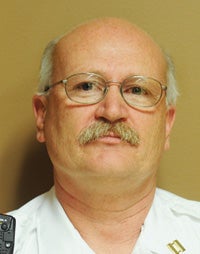Freeborn County has 3 items on web-based disaster map
Published 1:10 pm Thursday, April 11, 2013
The June 17, 2010, tornado outbreak is among three natural disasters that Freeborn County has encountered in the past five years.
A new report illustrates Minnesota’s vulnerability to weather disasters.
The report released by Environment Minnesota includes a clickable online map showing that 82 of Minnesota’s 87 counties have sustained federally declared weather disasters since 2007. Those disasters including flooding, tornadoes and severe storms. Only Koochiching County in far north-central Minnesota, and Todd, Morrison, Benton and Sherburne counties in central Minnesota stayed off the federal disaster lists in that five-year period.
“Extreme weather is happening — and it’s causing extremely big problems,” states Environmental Minnesota’s website. “To make matters worse, global warming increases the likelihood that we’ll see even more extreme weather in the future.”
It goes on: “To tackle this threat, we must cut the carbon pollution from power plants, cars and trucks, and other sources that fuel global warming.”
The other two disasters cited for Freeborn County were a severe storm on June 6, 2008, and a severe storm on Sept. 22, 2010.
Mark Roche, Albert Lea’s emergency management coordinator and Freeborn County’s deputy coordinator, said often the disasters can span a window of time and include multiple storms, not just a single date as indicated by the map. He noted two incidents listed as storms also were marked by flooding.
The storm of June 6, 2008, was less significant than the one the night of June 11 and morning of June 12, when Gov. Tim Pawlenty declared an emergency for Freeborn and Mower counties. That storm delivered heavy rains and sent creeks, rivers and ditches over their banks. One drainage ditch washed out its culvert and the roadway of Freeborn County Road 34. Two cars fell into the washout, and one man died. A deadlier crash occurred June 29 that year when the drunken driver of a sport-utility truck ignored barricades and crashed into the washout, killing two passengers.
Nearly three years later, Albert Leans are familiar with the tornado outbreak of June 17, 2010, during which one woman perished and many homes, farms, barns, trees, crops and livestock were destroyed.
According to tallies from the Chanhassen bureau of the National Weather Service, 48 tornadoes were spotted in the state that day, making it the day with the most tornadoes in Minnesota history.
Of those, 19 were in the counties of Freeborn, Faribault, Steele, Dodge and Blue Earth counties. Seven alone were in Freeborn County. All others were in northern Minnesota and the northern Twin Cities metro area.
Many Albert Leans also recall a severe thunderstorm the night of June 26, 2010. Straight-line winds damaged many roofs and downed many trees.
Roche said that June 17-26 window had many storms, and the disaster declaration treated it as a single disaster.
“It was just storm after storm after storm,” he said.
September 2010 was a big month for floods. In fact, 6 inches of rain fell in two days, Sept. 22 and 23. Albert Lea that September received 9.7 inches, when it averages 3.5 in that month. Sewers backed up, and water spouted out of manhole covers. Some basements had leaks. Some filled with water. Parks, streets and lowlands were under water.
Roche said Environment Minnesota’s report matches what he has heard elsewhere. For example, tornado alley — and the thunderstorms that go with that territory — has moved, Roche said.
He said he attended a seminar on the changing tornado alley at a state conference two years ago. The presenters showed tornado patterns from the 1940s and 1950s in the classic tornado alley, which crossed the Great Plains from Texas to South Dakota. It barely touched Minnesota’s southwest corner.
Now, he said, tornado alley doesn’t look like an alley and it goes as far north as Mahnomen County in Minnesota. That’s northwest of Itasca State Park.
Tornado alley looks more like a bird foot, with parts extending east to Ohio, north to Minnesota and across Iowa and Missouri, Roche said.
In fact, proof of a changing tornado alley came in 2010, when Minnesota led the nation in tornadoes, with 145. The state normally has 27 a year.






